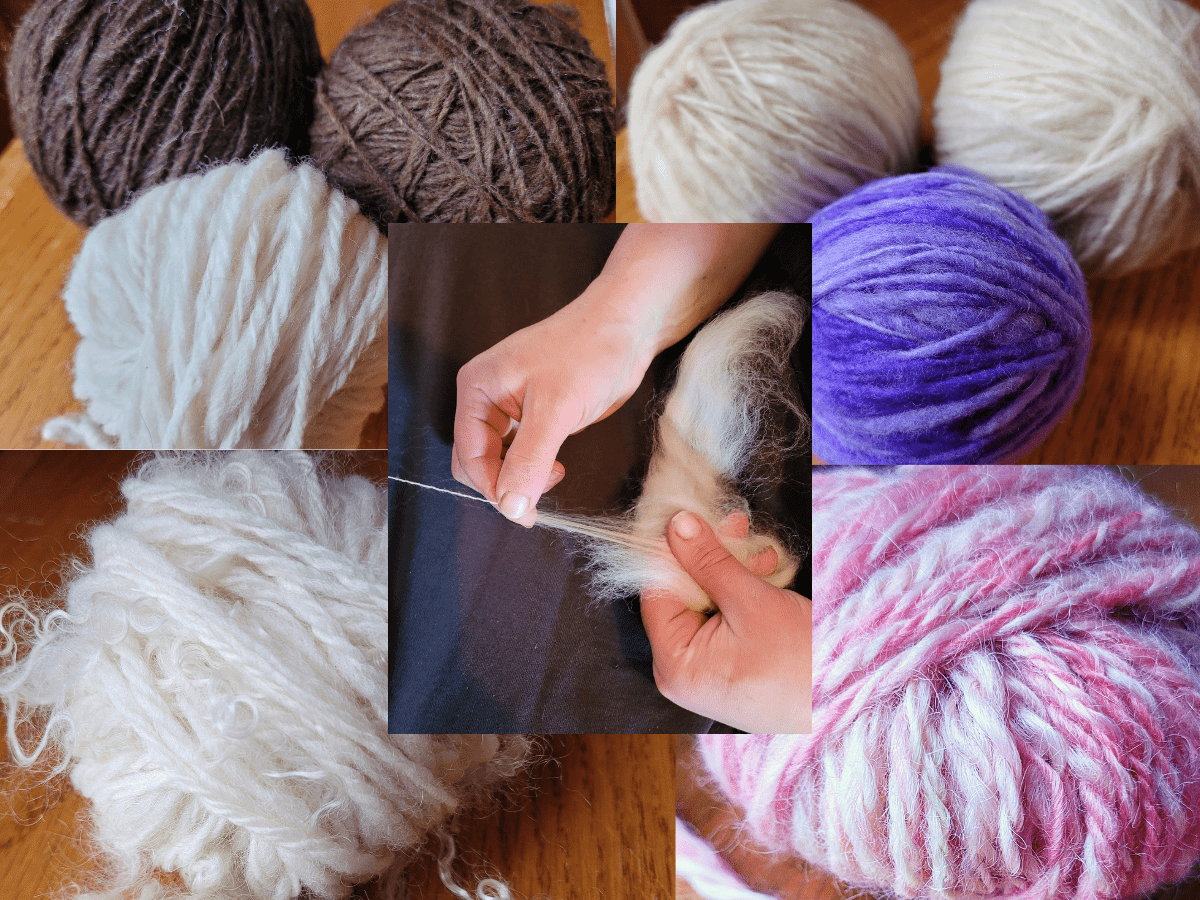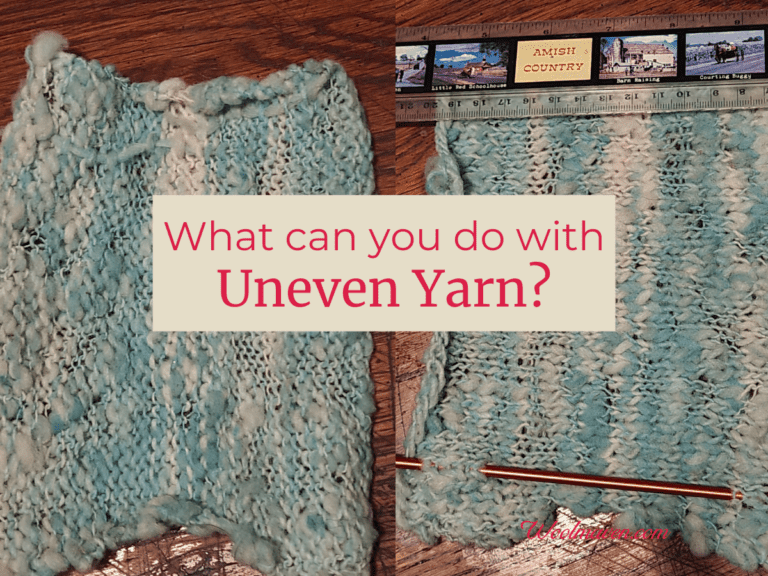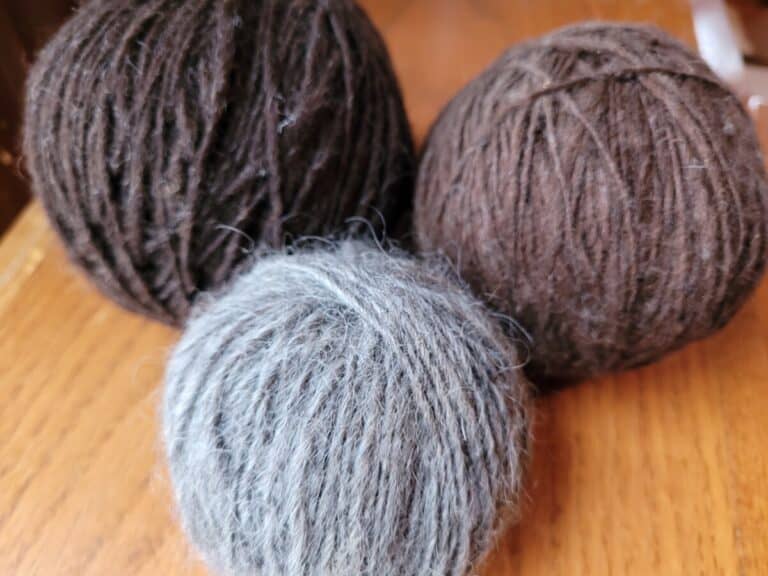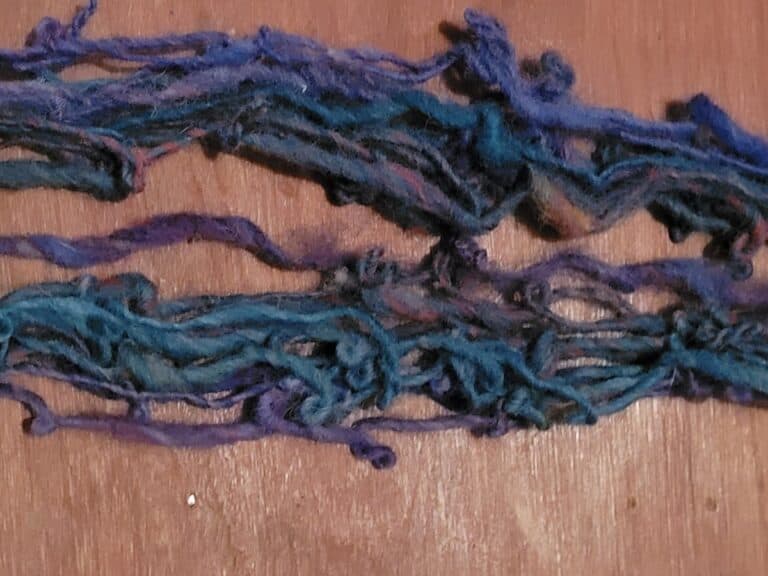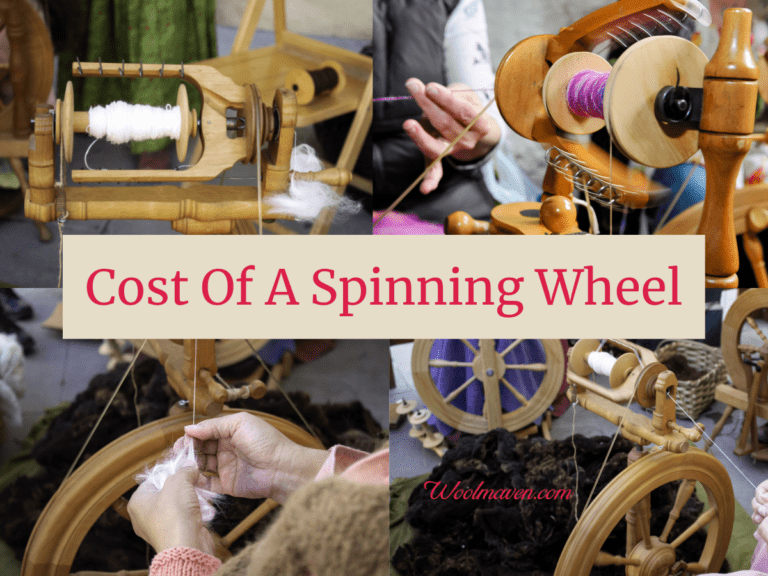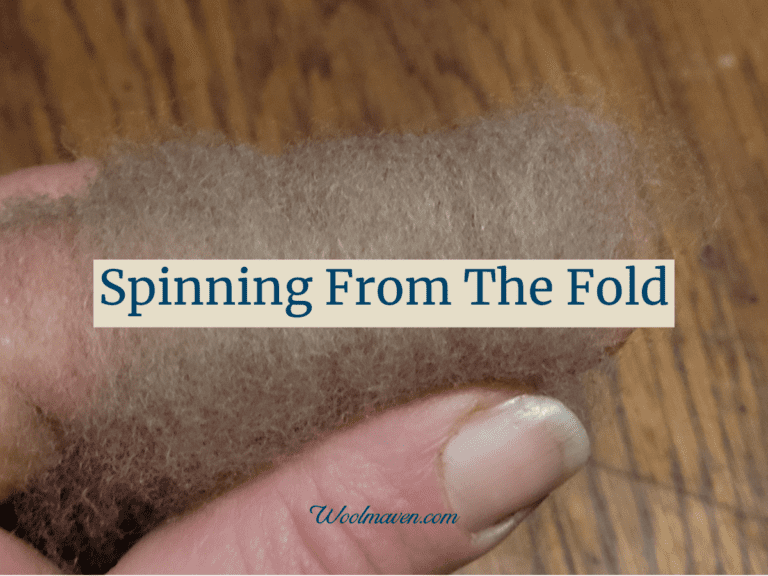7 Tips To Like The Yarn You Are Spinning
You have to wonder: How do you know that you will like the yarn you are spinning?
Here are a few tips on how to increase the likelihood that you’ll spin the yarn you are hoping for.
Is Spinning Your Own Yarn Worth It? goes into the costs and benefits of handspinning compared to buying craft yarn.
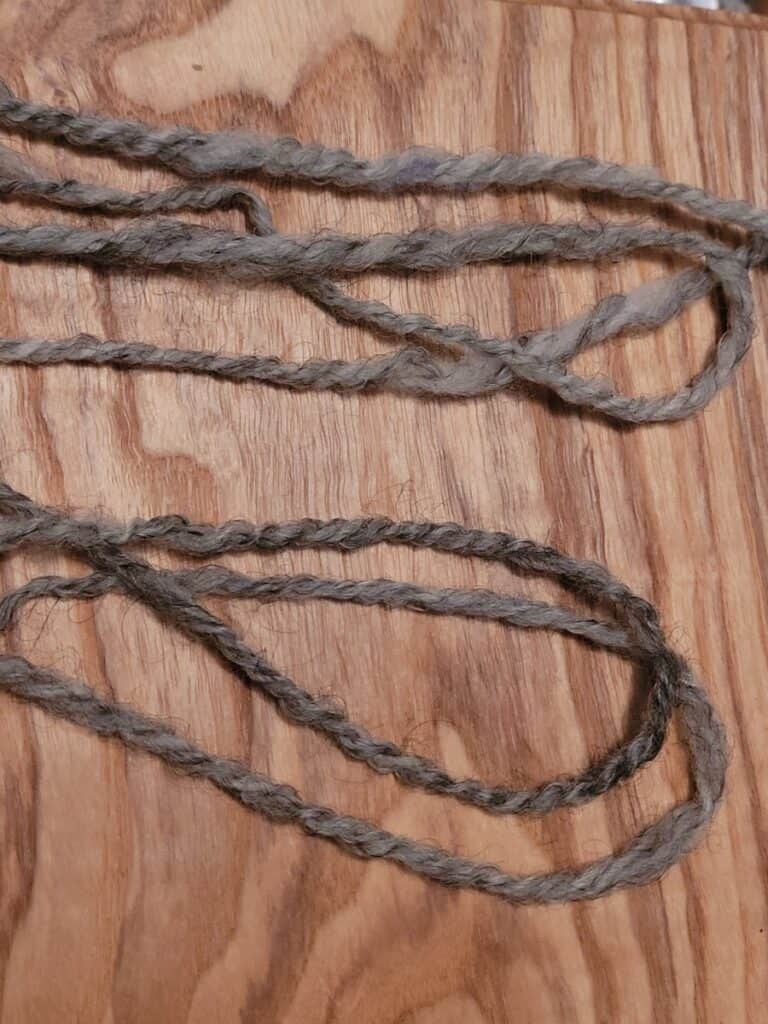
Test spin first
Test out a bit of the wool or other fibers that you are working with first, before you get too crazy into anything else.
You need to know how this fiber works for you and your spinning style. I find that it’s crucial to get a feel for the wool, then get some ideas.
Don’t stop with just the spinning!
Be sure to ply, if that is part of your plan, as well as knit or crochet it up into a swatch and see what you get.
For me, yarn is very different on the bobbin compared to in the swatch.
7 Tips To Spin A Tighter Yarn gives you tips on how to spin a tighter yarn. If you need the opposite consider 7 Tips To Spin With Less Twist.
Have a plan for your spinning
Have a plan for your spinning, where are you going with this fiber? Take a few minutes and think it through.
What exactly are the characteristics of the yarn you want to spin? How will you get the results you are looking for?
If you are relying on your yarn turning out a certain way, are you starting off with a fiber that is likely to work well in the way you need it to?
If not, you may have to adjust what you are doing to get the results you are looking for or work with a different fiber.
I tend to be more of a “let’s see what happens with this wool” type of spinner and tend to go with what the wool seems to be naturally trying to do.
Not everyone thinks this way, of course, but the point is for you to think about your approach as you are deciding what to do with your yarn.
To be clear, I’m not saying only spin the fiber and/or ways that you know will work, not at all!
I’m saying that when you venture into new territory, expect that it will take a noticeable amount of try and see testing to get the results you are looking for.
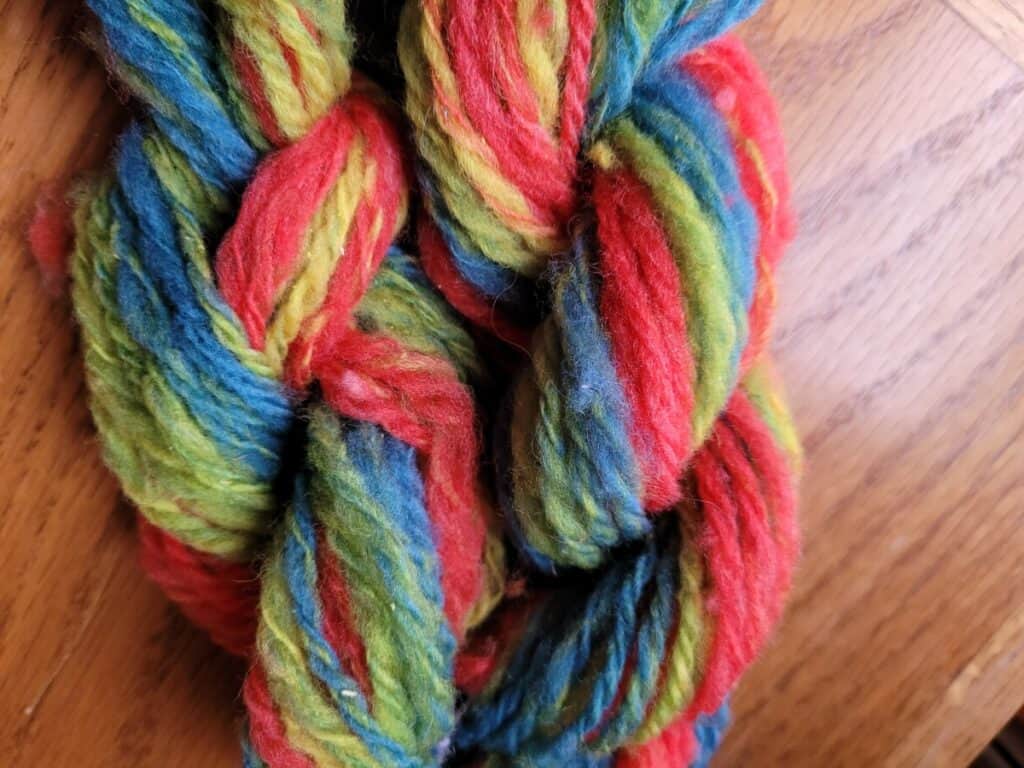
Have a sample yarn
If you decide to try to hit a specific target yarn, it will be much easier to keep on track if you have a sample yarn right there with you to check as you are spinning.
Of course, you could use a multi tool and check the gauge, wraps per inch and angle as you go, if that is more your style!
Check the yarn as you spin
You’ll want to check the yarn you are spinning against the sample, frequently throughout the spinning, especially at the beginning.
It will probably be easier if you have your check timed, for instance after you treadle 10 times or each time you add a new section of roving.
Pick something and stick with it. When you hit your target multiple times in a row, then you can increase the time between checks.
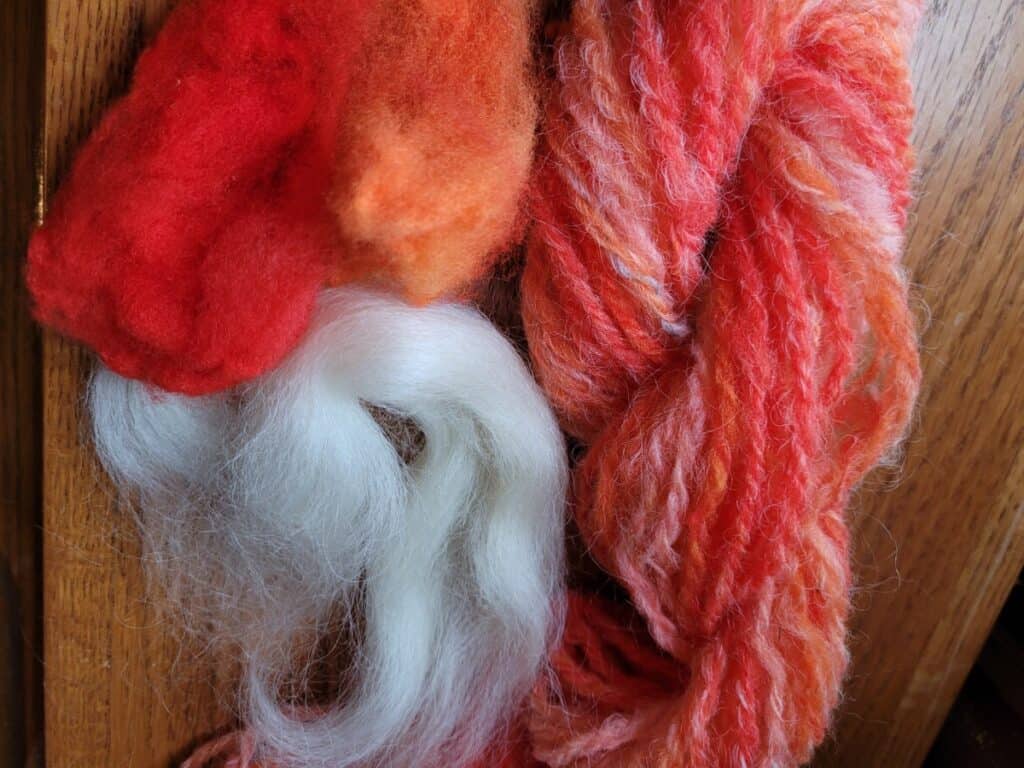
Do a bit of research before spinning
You’ll be able to take advantage of other woolcrafter’s experiences and use their ideas to get some ideas of your own, if you do some research before starting to spin for your project.
Best Wool For Your Handspinning Project gives you some direction on picking out the wool that will suit your plans!
Why make all of the mistakes yourself? Especially if someone else can save you the trouble and you can learn from their challenges.
Of course, you’ll want to combine your research with a test spin or two of your own, since no one else is exactly like you in skills or preferences.
Take what you read and compare it with your abilities and test spin experience to make a plan for your project.
One of the neat things about handspinning is that it combines technical aspects with art, so while there are some basics where you go from there is all you.
The point I’m trying to make is while it’s good to check around and see what other folks have done, don’t let that limit you and your thinking.
Take their experiences into consideration then go with your opinion.
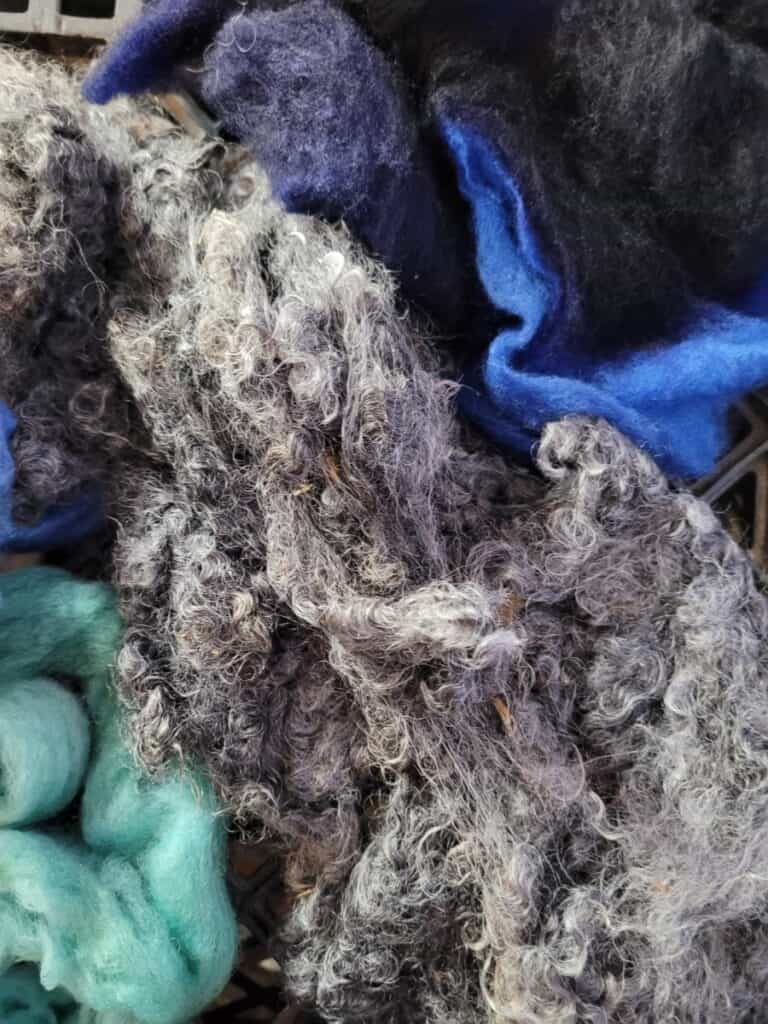
This post contains affiliate links, which means I receive commissions if you choose to purchase through links I provide (at no extra cost to you).
Looking for a great resource on which fiber to pick and how best to use it? Consider getting The Fleece And Fiber Sourcebook, filled with wonderful pictures and details on just about any wool you can find.
Start with fiber that makes sense
It will be easier to make a yarn that you like if you start out with fiber that is known for making the type of yarn you are hoping to make!
For instance, can you make a lovely yarn with Romney? Sure. Will it be as soft as Merino? No, but it can be soft and wonderful for what it is.
Another example would be using 100% angora for a pattern that will need to bounce back, like a hat with a ribbed edge.
100% angora will not bounce back and your hat will “grow” out of shape. You will have a yarn without the properties you need for that pattern.
100% angora yarn is wonderful stuff, but is a mismatch for this project!
The easy fix here is to make a hat from a pattern designed to work with a yarn with no memory (like 100% angora) or add some wool to the fiber blend.
With some wool in the blend with the angora, something like 50% works well for me, you’ll get the best of both worlds, a super soft yarn and that has memory.
For another example, the grey mohair pictured above is fun to spin, it’s long, pretty fine (25 microns) and has a nice luster but is hard for me to work with.
To get a fuller, more fluffed yarn that is super easy to use, I blend with wool and love the results!
Be willing to adjust
If your test spins do not turn out the way you had hoped, think things over again.
There seem to be two separate schools of thought here: make it happen or rethink it.
You can be the boss of the wool and make it work for you, within the limits of the wool’s characteristics.
Do you need to have a bit more practice or brush up on a technique so that you can get this wool to work for you for this project?
I find that coming back then next day, when I am fresh, makes me a better handspinner than I was the night before, especially if I am having a tough time with a new to me wool.
The other option is to rethink your yarn and take another direction with your spinning.
This tends to be more where I sit, I don’t like to fight the wool the whole time.
For example, I half heartedly carded some not so great wool that I had dyed, because the dye was old and I wanted to see if it would still work well.
Then I thought, let’s see how it spins up. It was a mess, all lumpy! It occurred to me to stop fighting the wool and go with the lumps.
It made a cool looking swatch and was an interesting reminder to me that I prefer to go with what the wool seems to want to do and to not cheap out on the carding!
When the yarn you are spinning is not turning out the way you had hoped:
- would a fiber preparation change make a difference?
- could you blend in another fiber?
- could you change the way you are spinning?
Consider doing a bit of searching around and find a tutorial on how to work with this specific fiber or spin this specific yarn.
Sometimes it’s just a small insight that makes all the difference!
As you can tell, there are no right answers here, it’s more about you getting better at matching what you want to do with the wool and spinning.
Could it be your wheel?
A final thought that may help you, since it has recently happened to me, is does your wheel match what you are trying to spin?
I finally splurged and got a new wheel, I went with a Schacht Matchless. It’s not that my old one was a problem, I just wanted one with higher ratios and I decided that this was the time to get one.
Wow, has it made a difference! I am easily spinning yarns that I couldn’t make happen before, no matter how hard I tried.
Using my new wheel has helped me realize that some of my previous frustration with the first wheel was that I didn’t know how to get what I wanted from it, which circles back to spinning yarn you like.
Does your current wheel match your spinning skill level and desired outcome? Some wheels are incredibly versatile and can be set to spin just about anything, but not all wheels are that capable.
All wheels have a range or type of spinning that they are excellent for and things that will be frustrating to use them for, are you matching your spinning with the ideal spinning for that wheel?
The further apart your yarn’s intended result and the wheel’s ideal use range are the harder it will be to spin the yarn you want. A more capable wheel was the near instant solution for me.
The Joy Of Handspinning has a page on Basic Handspinning Techniques which includes a paragraph on each technique with an accompanying video.
If you are considering using a new technique for your yarn, this is a good place to start.

